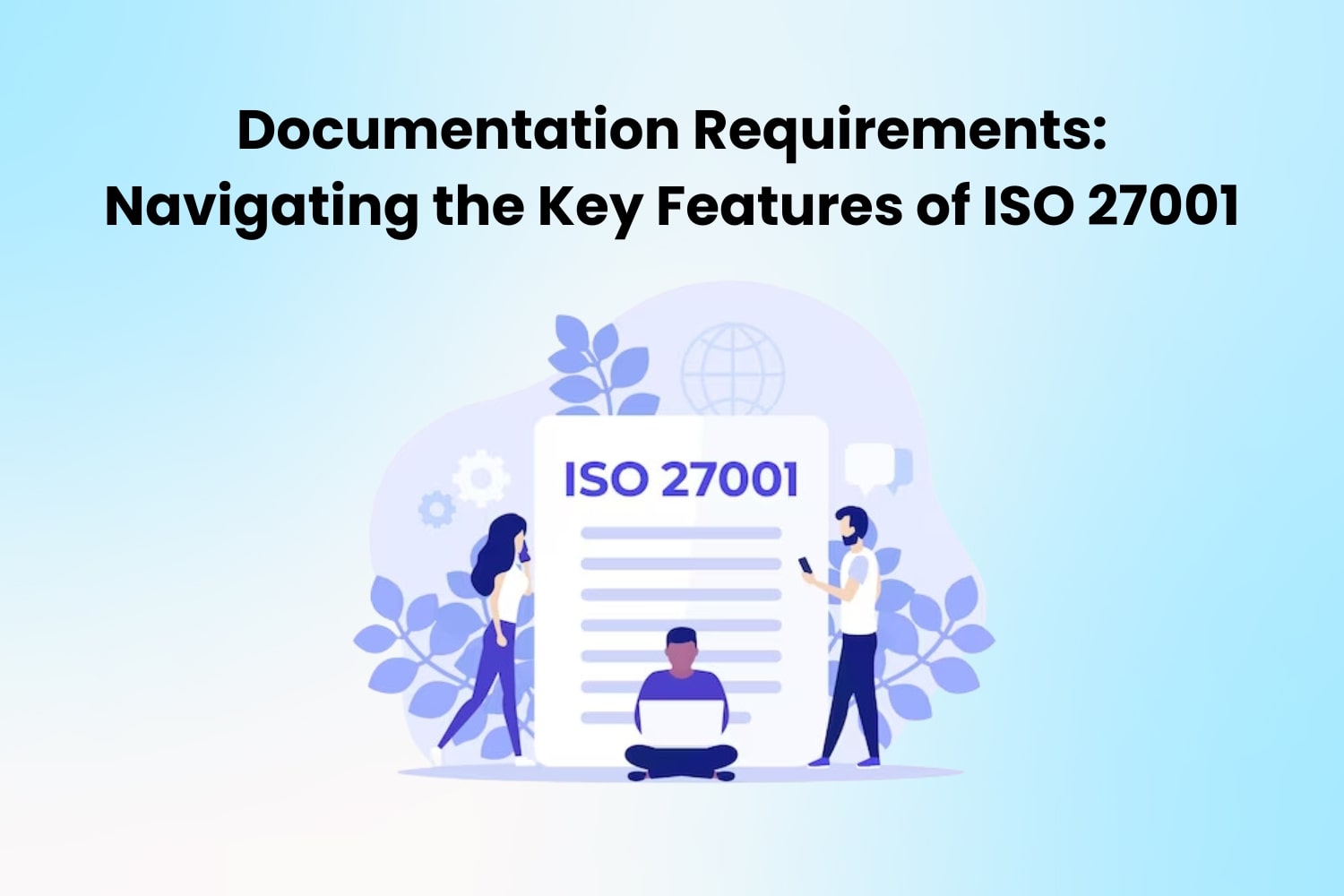Businesses across the globe are increasingly using information security standards like ISO 27001 to protect their digital assets. Organizations are realising the value of having a robust Information Security Management System (ISMS) as the landscape of cyber threats grows. Professionals often use ISO 27001 Training to enhance their understanding of the Key Features of ISO 27001.
In this blog, we will look at the fundamental documentation requirements specified in ISO 27001, providing insight into how businesses may manage these important facets to improve their information security posture.
What is ISO 27001 Training?
ISO 27001 is essential to recognize the need for sufficient training. To guarantee that staff members are knowledgeable about the guidelines and procedures specified in ISO 27001., training is essential. This makes implementation go more smoothly and promotes an awareness and accountability culture for information security. A proactive step to strengthen your organization’s defenses in the digital age is to engage in ISO 27001 training, as data breaches are a persistent danger.
Key Features of ISO 27001
Risk Assessment and Management
Risk assessment and management are careful processes that form the foundation of ISO 27001. This is the cornerstone of a successful ISMS. Organizations need to consistently identify, assess, and manage information security threats to guarantee their data’s confidentiality, integrity, and availability. Thorough training allows everyone in the company to actively participate in this process and promotes a sense of group responsibility for risk reduction.
Information Security Policy
One of the main components of ISO 27001 compliance is creating a solid information security policy. This document outlines the organization’s commitment to information security and acts as a compass. Employees who have received training can better follow this policy and create a culture where protecting sensitive information is the first concern for all actions.
Asset Management
Sensitive data protection requires effective information asset management. The need to correctly identify, categorize, and manage assets is emphasized by ISO 27001. Employees who get training are guaranteed to comprehend the importance of the resources they manage and the precautions needed to keep them safe from harm.
Access Control
Preventing unauthorized disclosures of sensitive information requires strict control over access to such information. Employees who have received training are used to access control, which guarantees that only authorized users may access specific data. This proactive strategy greatly decreases the likelihood of internal issues leading to data breaches.
ISO 27001 Documentation Requirements
Policy Documents
The creation of thorough policy papers is the first step on the path to ISO 27001 compliance. These papers provide the foundation for later execution and express the organization’s commitment to information security. The skills required to create compliant policies specific to the organization’s requirements are imparted via ISO 27001 training.
Risk Register
A thorough risk registry is one of the most essential tools in the risk management process. It lists the hazards found, their possible effects, and the precautions taken to lessen them. The ISO 27001 training program guarantees that those in charge of keeping the risk register are skilled in gathering, evaluating, and updating risk data by changing threats.
Statement of Applicability (SoA)
A document that describes the controls the organization has chosen and the thinking behind those decisions is the SoA. The knowledge gained from training is essential for creating a statement of assurance that meets the standards and the organization’s goals.
Procedures and Work Instructions
An ISMS’s ability to function effectively depends on its clear and simple job instructions and processes. The skills needed to create procedural documentation that is both compliant and useful for daily operations are imparted during ISO 27001 training. This guarantees that workers may easily incorporate security measures into their daily duties.
Challenges and Best Practices
Overcoming Implementation Challenges
Although there is no denying ISO 27001’s merits, organizations often encounter difficulties when implementing it. Training in ISO 27001 gives people the skills to handle these difficulties successfully. A staff with proper training is better equipped to face obstacles, such as reluctance to change and aligning current procedures with ISO 27001 regulations.
Fostering a Security-Conscious Culture
Creating a security-conscious organizational culture is a major obstacle to implementing ISO 27001. Beyond just dispensing knowledge, ISO 27001 training instills a value for information security in mind. Overlooking policy texts and procedural regulations, a best practice that transcends both is encouraging workers to see security as everyone’s responsibility. Security is an extra line of defense against possible dangers when deeply embedded in the corporate culture.
Best Practices for Sustaining Compliance
Maintaining compliance with ISO 27001 requires constant effort. Frequent training sessions operate as refreshers, ensuring staff members know about the most recent information security best practices and new risks. By taking a proactive stance, the ISMS is certain to continue being flexible and robust when new problems arise.
Conclusion
To sum up, the fundamental components of ISO 27001 provide a thorough foundation for creating a reliable ISMS. Every element, from risk management to access control, is essential to strengthening an organization’s information security posture. Investing in ISO 27001 training is a smart step to provide your staff with the knowledge and abilities necessary to protect your most precious asset, information, rather than merely a compliance obligation.
































































